#stonehenge homage
Photo

DC Metro Retaining Walls
Photo of a mid-sized traditional partial sun backyard stone retaining wall landscape in summer.
#permeable paving#boulders#stacked stone cairn#andy goldsworthy homage#stonehenge homage#large selection of ground covers#large selection of perennials
0 notes
Photo

Backyard - Mulch
This backyard mulch landscaping in the spring is an example of a medium-sized traditional backyard with partial sun.
0 notes
Text
Traditional Landscape in DC Metro
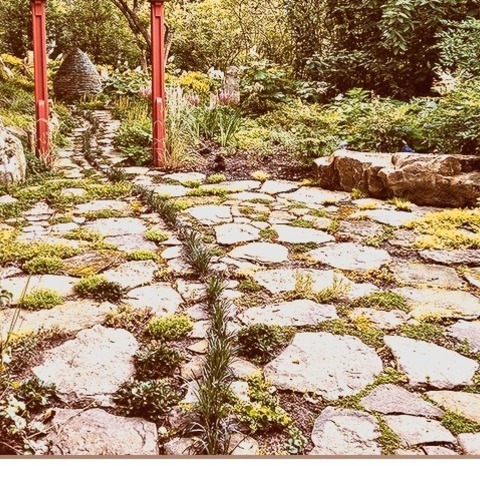
Ideas for a traditional, mid-sized backyard with stone landscaping in the summer sun.
0 notes
Photo

Traditional Landscape - Natural Stone Pavers
Photo of a mid-sized traditional partial sun backyard stone landscaping in summer.
#stonehenge homage#irrigation from collected rain water#wooden deck#bluestone patio set in mortar#large selection of ornamental trees#flat river stone pavers#stone fountain
0 notes
Photo

Container Garden (DC Metro)
#Photo of a mid-sized traditional partial sun backyard concrete paver landscaping in summer. stonehenge homage#bluestone patio set in mortar#flat river stone pavers#urn fountain#landscape
0 notes
Text
⛤History of Mabon⛤
The Mabon or Autumn Equinox is a holiday that takes place from the 21st of September to the 24th of the same month.
⛤The autumn equinox divides day and night equally - here we should all take a moment to pay homage to the impending darkness.
We also thank the sunset light, as we store this year's crop of crops.
The Druids call this celebration, Mea'n Fo'mhair, and honor the Green Man, the God of the Forest, by offering libations to the trees.
On this holiday it is appropriate to dress in elegant clothes and dine and celebrate in luxurious surroundings.
It is time to finish the old jobs and prepare for a period of rest, relaxation and reflection.
⛤ Pagans celebrate the aging Goddess as she passes from Mother to Crone, and her consort, the Lord, as she prepares for death and rebirth.
⛤The feast of the autumn equinox is also known by other names: Feast of the second harvest, Feast of Wine, Feast of Avalon, Autumn Equinox, or Cornucopia.
The Teutonic name, Winter Finding, spans a period of time between Mabon and October 15, which is the New Year in Old Norse.
The Romans celebrated a festival dedicated to Pomona, the goddess of fruit and growing things.
However, the most famous ancient myth comes from Greece. The autumn equinox marks Persephone's return to the underworld:
⛤In ancient Greek mythology, the beginning of the fall is closely linked to the story of the abduction of Persephone, also called Kore or Cora. Daughter of Demeter, goddess of earth and fertility, she was kidnapped and taken to the underworld to become the wife of Hades, the god-king of the underworld. After a period of mourning and struggle, Demeter eventually brought her daughter back from Hades to the light, but only for six months of the year. Each fall, Persephone must return to the underworld to spend six months with Hades. During these months, Nature withdraws.
⛤Mabon is a relatively modern neo-pagan celebration, which takes place around the September equinox.
⛤In the 1970s, the American author Aidan Kelley gave new names to the six pagan holidays rooted in the ancient Celtic tradition and added two new celebrations proper to the September and March equinox.
These holidays are celebrations based on the cycles of the sun.
⛤Inspired by a proper name derived from the Welsh word mab / map, meaning "son" or "boy", Kelly chose Mabon as the name for the autumn equinox celebration, and founded the ceremony he had composed for the festival in the Greek myth of Persephone.
⛤Mabon celebrates the second harvest and the start of winter preparations, and it's time to respect the impending darkness while giving thanks in the sunlight.
⛤Druids and pagans also flock to Stonehenge, the famous 5,000-year-old site in Wiltshire, and Castlerigg, another megalithic stone circle near Keswick, Cumbria, to watch the equinox dawn.
⛤The Christian church replaced many pagan celebrations with Christian observances. The most famous is Christmas, which replaced the ancient Yule festival around the December solstice.
⛤The closest Christian celebration to the September equinox is Michaelmas, also known as the feast of St. Michael and all angels, on September 29th. In this period, the feast of St. Michael is mainly observed in the Catholic church.
⛤Centuries ago in England, the time around the feast of St. Michael also had a commercial side: servants were paid wages after the harvest and workers looked for new jobs at job fairs that also became a place for celebrations.
⛤Mabon is a time full of magic, all connected to the changing seasons of the earth, this is the Second Harvest, the Fruit Harvest and the Great Thanksgiving.
⛤The Goddess is radiant and the God eventually dies with her gift of pure love with the cutting of the last grain. As the grain is harvested in abundance during Lammas and reaches completion, we enjoy the abundance of fruits and vegetables at this time.
⛤It is time to thank the waning sun for the richness of the harvest that has been bestowed on us.
⛤Sometimes it seems like every Holiday calls for thanks, and it really is: every spin of the Wheel brings both inner and outer gifts and insights, so Mabon is a celebration and also a period of rest after harvest work.
⛤In terms of your life path, it is time to reap what you have sown, time to look at the hopes and aspirations of Imbolc and Ostara and reflect on how they have manifested.
⛤It is time to complete projects, to clear out and leave what is no longer wanted or needed as we prepare for the descent, so that winter can offer a time for reflection and peace.
⛤And it's time to plant seeds of new ideas and hopes that lie dormant but nurtured in the dark, until spring returns.
I'll be posting more Mabon related content during the week so stay tuned for spells, rituals, prayers, history and affirmations!
Hopefully, you'll have a great Celebration this year too!
⛤Isidora⛤
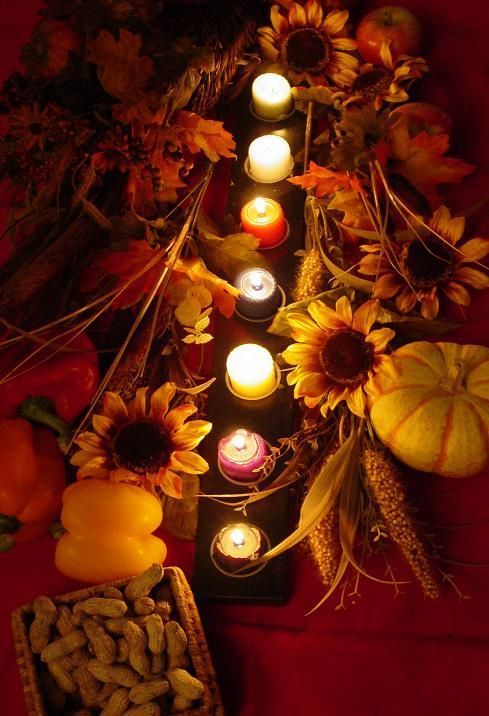
#mabon#maboneng#kitchen witch#magick#witch aesthetic#witches#witchy things#witchyvibes#witchblr#witchcore#wicca#witchcraft#wheel of the year#witchythings#green witch#pagan wicca#wiccan#eclectic wicca#celtic wicca#green wicca#wiccawoman#wiccablr#pagan#witchcraft history#history of witchcraft#holiday#eclectic pagan#hellenic pagan#paganism#norse pagan
799 notes
·
View notes
Text
Crevan ESPANE (???) aep Caomhan Macha.
But what if... Iberian elves?
Neolithic populations of the British Isles reveal genetic threads leading to present day Northern Spain and Portugal. Of particular interest, in relation to the later Celtic culture (6th century BC) then would be the Celtiberians.
The oldest identified population of the Islands belonged to the same group as the Greek Pelasgians or the Italians Etruscans. Anglo-Saxon historians call this mysterious people Iberians, because they are believed to have come from the Iberian Peninsula. It is not known from where they came to the Iberian Peninsula, when they landed in the British Isles and whether they found and conquered any indigenous, ancient races there.3
The Iberians did not leave many traces of themselves in the Islands (if, of course, we do not count the Stonehenge and New Grange), which leads to the conclusion that they did not develop like the Etruscans, but remained at a rather primitive level of civilizational development until the arrival of the Gallic Celts (around 6th century BC), an ethnic group of particular interest to us.
Part of the indigenous primeval population of Britain (the alleged Iberians), survived, however, they did not integrate with the Gallic Celts and were not conquered. These were the tribes that inhabited the wild, inaccessible highlands and mountains in the north of the Island - Albany, which is today's Scotland. These northern tribes, as we will see later, defended themselves against foreign pressure very effectively and for a very long time.
- A. Sapkowski, The World of King Arthur
Truthfully, this is not meant as elves = Celts. Or that elves = Iberians. It is merely to repeat: elves are migrants. A wave of migrants shrouded in myth and dreams, who - by mixing history and legend - would have given Celts many of their deities, places of worship, and culture (possessing similar language, traditions, cultural mores/taboos, etc). Strange folk, who arrived one day in their white ships, only to - in time - forsake these shores just as suddenly; leaving behind an ubiquitous mark of their presence. If you were Irish, then you might have called them Tuatha Dé Danann - Tribe of gods, or, later, Children of the Goddess Danu. If Welsh, then Ellyllon, or Tylwyth Teg, the host of Annwn. If Scottish, then Aos Sí, Sidhe.
The British Islands, as we call them today, were exceptionally lucky in terms of the people living there. They have been visited over and over again since time immemorial. After defeating the indigenous population, the invader quickly became an "aboriginal" only to be defeated and conquered by someone else who became an "indigenous" again, and so on. Thanks to this, it is not known who was the "real native" there. I mean, it wouldn't be known if it weren't for myths and legends.
- A. Sapkowski, The World of King Arthur
Making Espane in Avallac'h's name a homage.
Everyone has the right to some roots. Even legends.
---
[3] "Quite recently, a Bulgarian philologist, on the basis of a study of the Hittite and Etruscan languages, proved that these languages derive from a common root. The Etruscans, the Bulgarian continues, are the people who came to Italy from Asia Minor. To be precise, it is none other than the Trojans of Homer and Virgil. And if the Etruscans and the British Iberians are related, the legend of Brutus, a descendant of Aeneas unexpectedly shows us its second bottom."(Sapkowski, A. The World of King Arthur)
Sapkowski is herein drawing the connection between the settlers of the British Isles and the exiles of Troy.
My second favourite theory comes from @lladmie
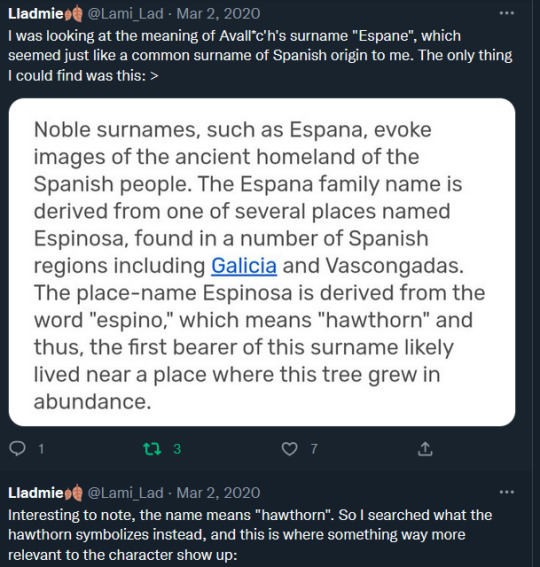
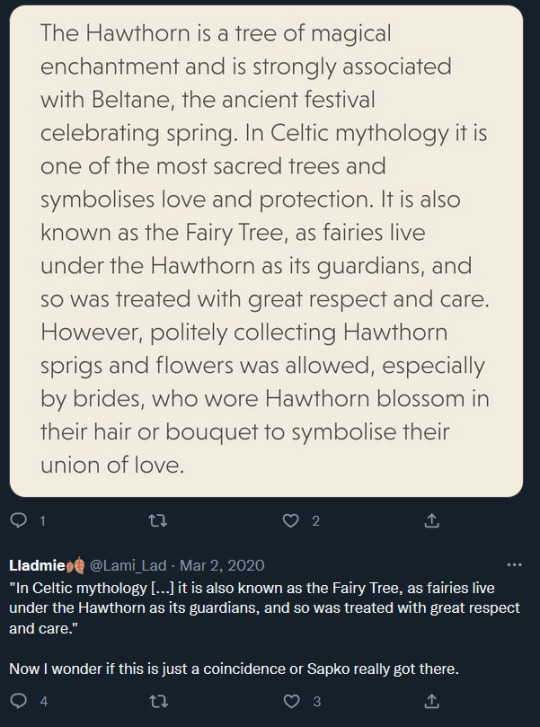
#avallac'h#aen elle#aen seidhe#the world of king arthur#celtic mythology#folklore#homespun etymologists unite!#the witcher#the witcher books
20 notes
·
View notes
Text
Community Activity 1

I drew a portrait of my friend Sanika. I admire her unconditional kindness, her drive, and brightness. I met her here at Bonas when we became roommates sophomore year. Our bond has been strong ever since! She has taught me many things and opened my eyes and mind to new ideas. I gave her cat ears because, like a cat, Sanika is cute, curious, yet very calm and mature. I appreciate her letting me draw her portrait for this project!
Community Activity 2
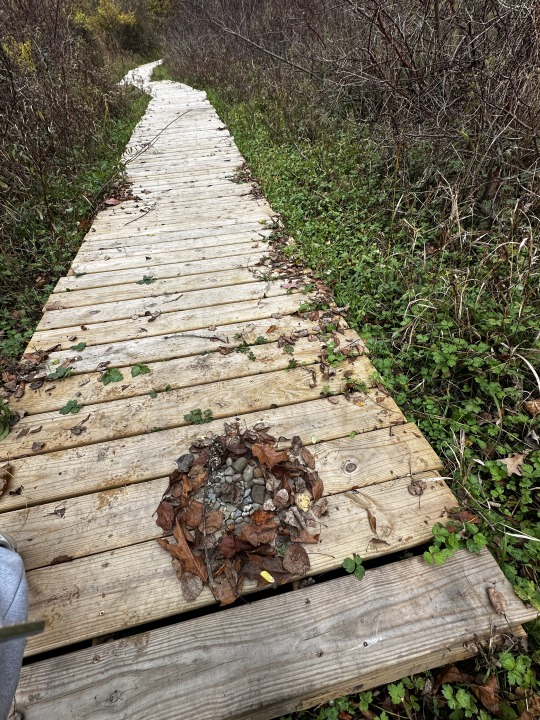
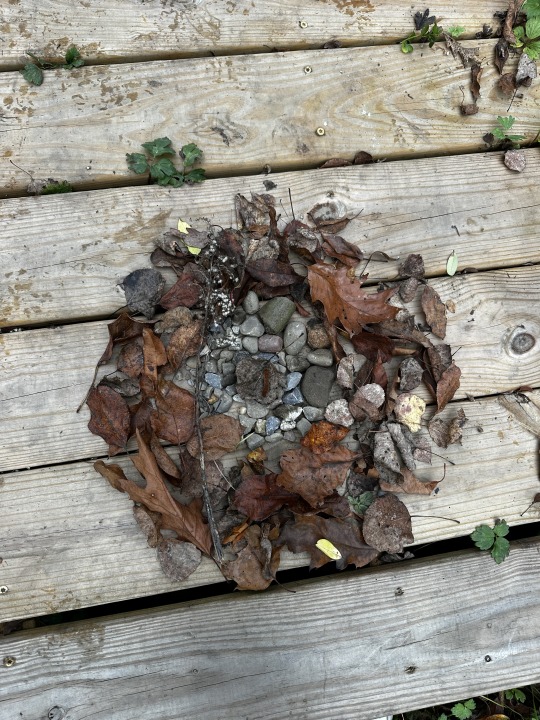


My trail-side art work at Bob's Woods combines pebbles, leaves, and the unexpected star of the show, Bob the caterpillar. In the heart of nature, this circular masterpiece pays homage to Stonehenge's post and lintel construction style. While creating, I experienced a chance encounter with a passerby and her four hyper pups. Although the hounds stampeded over the art piece, this encounter led to Bob's unexpected adoption, adding a delightful twist to the story. This passerby was actually a caterpillar breeder! How cool. Please, do go out and discover my outdoor artwork on the Bob's Woods trail!
Community Activity 3


My roommates and I painted a pong table! What college student doesn’t enjoy a game of pong before a night out this fall semester? It features aspects of each of our hometowns and those of St Bonaventure. We are awkward yes!
4 notes
·
View notes
Text
Fairy Folk or Fat Kids?
It was midnight in the winter of 1978, the sky clear and the temperature thirty degrees, quite frigid for southwest Georgia. A couple had visited a doctor in Camilla and were returning home to Baker County. He was a rural deliverer of the U.S. Mail and she a dedicated Sunday school teacher. They were the epitome of southern respectability. They were a mile east of the Flint River when they saw what they described as "five or six little beings approximately three and a half feet tall with no clothes and snow white in color." The short, white, nude beings "Were dancing in a circle around a large power pole," as if it were Stonehenge on a solstice. The couple immediately braked and turned around for a better look, but the entities had vanished, apparently scaling a barbed-wire fence (Ouch! hey were naked, remember?) and scampering through trees and a field.
On the following day, the man, his son, and another man returned to search the area around the power pole. Nothing was found until the trio encountered freshly plowed ground. Entering the field were several small footprints that looked as though they had been formed by eight-year-olds. And so a mystery was born. What were naked farm children doing scampering about the fields and woods of rural Georgia in the middle of the night? Then one man noted that the prints were twice the depth of his own, and he was six feet tall and weighed 180 pounds. So they were obese eight-year-old farm kids?
Not according to researcher Billy Rachels, founder of the UFO Bureau. He says, "They were space beings, and their body weight is more dense than ours." Even more startling is the fact that the prints stopped in the center of the field. From there, the beings could only have gone up, presumably into their hovering spaceship.
The final mystery is their purpose. Were they worshipping the great steel god that resides in the power pole or absorbing its energy? (The alien version of catching some says, perhaps?) Certainly it is the only time that anyone has paid homage to Georgia power.
1 note
·
View note
Text
Pilgrimage in the Modern World

Every year, thousands of pilgrims gather at the Neolithic Stonehenge monument in Wiltshire, England to celebrate the summer solstice. Thousands more trek to Nevada's Burning Man Festival to burn a towering effigy, and the hopeful ill journey to Lourdes, France seeking a cure as they have for centuries. Although pilgrimage may seem an antiquated religious ritual, it remains a vibrant activity in a modern world of gadgets and instant gratification. As increasing numbers of us seek refuge from the demands of modern life and its electronic distractions, venturing to a sacred place in search of spirituality has never seemed more appealing. That pilgrimage continues to exercise such a strong attraction is testimony to the power it continues to hold for those who undertake these sacred journeys.
Pilgrimage is broadly defined as an outward journey of a religious or spiritual nature, typically to a shrine, temple, site or rite of significance to those of a particular faith or belief system. There are pilgrimages associated with all the world's spiritual traditions. Perhaps best known is the Hajj, an annual journey to Mecca considered one of the five pillars of Islam. Another famous pilgrimage is the Camino de Santiago, a journey made by Christians to the shrine that houses the remains of the apostle Saint James in Galicia in northwestern Spain. Jews make pilgrimage to the Temple Mount in Jerusalem, while Tibetan Buddhist, Hindus and Jains circumambulate Mount Kailash, the holiest mountain in the Himalayas. Every 12 years, Hindus in India gather at one of four sites along the Ganges river in what is known as the Kumbh Mela, considered the single largest gathering of human beings in one place on the planet.
The purposes for undertaking a shamanic or religious pilgrimage traditionally range from fulfilling a spiritual vow, finding or deepening one's faith, seeking a remedy for physical or spiritual problems, requesting guidance from spirits or deities of Nature, undergoing initiation rituals, paying homage, to realigning with one's innermost purpose and passion. For many, pilgrimage is a way to mitigate and resolve karma, the sum of a person's actions in this and previous states of existence, viewed as deciding their fate in future existences. Undoubtedly pilgrimage benefits those best equipped to receive its effects, pilgrims with a developed meditation ability, an unfolded responsiveness to the inner world and a receptive vision.
Since ancient times, sacred sites have had a mysterious allure for billions of people around the world. Legends and contemporary reports tell of extraordinary experiences people have had while visiting these places. Different sacred sites have the power to heal the body, enlighten the mind and inspire the heart. A growing body of evidence indicates that there is indeed a concentration of holiness at pilgrimage places, and that this holiness or field of energy contributes to a wide variety of beneficial human experiences. The value and benefit of pilgrimage is often only revealed long after the physical journey is over. The pilgrimage never ends. To learn more, look inside The Art of Pilgrimage: The Seeker's Guide to Making Travel Sacred.
#pilgrimage#spiritual journey#pilgrimage sites#Burning Man#stonehenge#sacred sites#power places#Mecca#lourdes#Camino de Santiago
12 notes
·
View notes
Text
Mediosamonios also says Alban Eifin, midtsommer

Photo : Aurelie Scouarnec (all rights reserved).
Mediosamonios also says summer solstice or Saint-Jean, Litha, Alban Eifin (Alban Hefin variant), Mediosamonios and Midsummer. In Scandinavia, we speak of Sankthans, Jonsok, Johannesvake, or Midtsommer.
We know this festival well, which has current resonances in the "fires of St Jean". At the summer solstice, the Sun makes its longest course from northeast to northwest.
The days are at their maximum amplitude and the solar energy is at its maximum activity. It is also a particularly favorable period for picking magic and medicinal plants that are traditionally collected at the dawn of the solstice.
Among the sacred plants lunar mugwort, solar St. John's wort and verbena officinalis which creates the link between the two.

Mugwort

Verbana officinalis
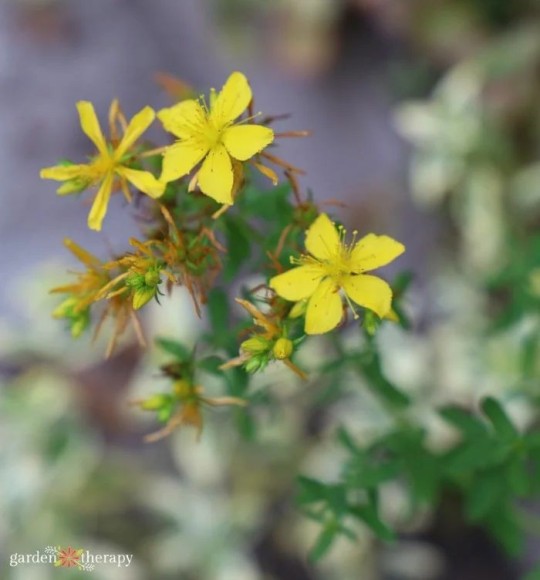
St John's wort
There are others, the list is long, fern, ground ivy, stonecrop, loosestrife, piloselle hawkweed, warbler mint, figwort, yarrow... So many plants which were not only endowed with powers over illness but also over luck and bad luck. It is enough to hang a bouquet of these plants on the threshold of the house or the barn to ward off bad luck.
The Sun has become a handsome, vigorous male, he 's at the peak of his strength. And paradox, in doing so, already presents the germ of its fall. Solstitial rituals are complex and are often held in several parts. The observance of the vigil, the dawn ceremony and the noon ceremony.
The vigil is held near the mounds or places of memory, they are an inner quest, a quest for vision at the same time as the occasion for exchanges, discussion, music or poetry The dawn ceremony is a homage to the Sun and an appeal to the life force of the Sun.
The following ceremony welcomes the coronation of the King and honors the ancestors and Tradition.
One of the most famous ceremonies is held on the site of Stonehenge and sees hundreds of people flocking to celebrate the sunrise in this place. Celebrations take place every year in this place. They are often marked by joy and a certain eccentricity that has always been characteristic of pagan celebrations.
The solstice is a moment of extroversion, we dance, we jump, we sing, we make music.


Photos : Aurelie Scouarnec (all rights reserved).
Sometimes sun wheels or firebrands (bures) are turned to celebrate the triumph of the Sun. Moments of jubilation that are accompanied by moments of reflection because we know that the Sun at its highest is already beginning to decline.
Fire, its implementation, its maintenance and the offerings made to it, are important elements in the art of the Druids. It is beneficial by the protection, the health, the illumination that it offers. It is said that the strength of a Fire is related to the art of its construction: "Mog Ruith said to Cennmhar: 'Light and prepare the fire. Cennmhar got up and arranged the pyre thus: he formed it like a churn with three sides and three angles, but seven gates, whereas there were only three gates in the northern fire.

Midsummer fire
Making the “bed of fire” is still part of the druidic arts.
Druidic Fire Rite
The Fear lasraichean will come forward to build the bonfire, with the 7 sacred woods that will have been chosen before the ritual, think about having beautiful logs and twigs to light, paper and everything else too.
The 7 sacred woods for this rite are: Fir, Birch, Beech, Elm, Chestnut, Apple and Oak.
When the stake is ready, the officiant comes forward and says:
“O power of Nature and the ascents of Awen I honor you. By this feast of Tantad here in the height of the season of Light. I light a Druidic fire to pay homage to the Gods. »
And say the following Druidic prayer:
“Give us, O Gods, your support.
And with your support, strength.
And with strength, understanding.
And with understanding, science.
And with science, the science of what is right, the power to love.
And by loving, the love of all living beings.
And in every living being, the love of the Gods.
Elder Gods and just good! »
Mediosamonios is therefore a celebration of Fire, Fire of life, fire of Men. A fire kept up all night, during the vigil, while waiting to be able to greet the fire of Heaven, the Sun of Dawn which is “the eye of Belen”, or even the eye of the Day.
It is even said that fairies sometimes join in the feast of the living as Mediosamonios is also a night of the spirits like Samonios and Belotennia.
Druides OTHA
#mediosamonios#alban eifin#alban hefin#litha#midsummer#druidry#druidic#druid#druidess#hedge druid#paganism#celtic paganism
19 notes
·
View notes
Text
Exploring the Historical and Cultural Sites of the UK: Travel Tips for International Students

Study in United Kingdom in the treasure trove of history and culture, offering international students an unparalleled opportunity to explore centuries-old landmarks and immerse themselves in the tapestry of British heritage. In this article, we'll embark on a virtual journey through the UK's historical and cultural sites, providing travel tips for international students eager to discover the past and present of this remarkable country.
1. The Tower of London:
Explore this iconic fortress, home to the Crown Jewels and centuries of history. Arrive early to beat the crowds and make the most of your visit.
2. Stonehenge:
Marvel at the enigmatic Stonehenge in Wiltshire. Consider taking a guided tour to learn about its mysteries and significance.
3. Buckingham Palace:
Witness the Changing of the Guard ceremony at Buckingham Palace. Check the schedule for this iconic event.
4. Edinburgh Castle:
Discover the historic Edinburgh Castle perched on Castle Rock. The panoramic views of the city are breathtaking.
5. The British Museum:
Explore a vast collection of art and artifacts from around the world, including the Rosetta Stone and the Egyptian mummies.
6. Stratford-upon-Avon:
Pay homage to William Shakespeare in his birthplace. Visit his family home and enjoy a play at the Royal Shakespeare Theatre.
7. The Roman Baths:
Step back in time at the Roman Baths in Bath, a UNESCO World Heritage Site. Take a guided tour for in-depth insights.
8. The Giant's Causeway:
Venture to Northern Ireland to witness the otherworldly hexagonal basalt columns of the Giant's Causeway.
9. The Lake District:
Immerse yourself in the natural beauty of the Lake District, where you can hike, bike, and explore charming villages.
10. The Oxford University Colleges:
- Stroll through the historic colleges of Oxford University, including the famous Bodleian Library.
11. The Royal Mile, Edinburgh:
- Wander through this bustling street lined with shops, pubs, and historic sites, including St. Giles' Cathedral.
12. Cardiff Castle:
- Visit Cardiff Castle in Wales, known for its stunning architecture and Roman origins.
13. The Victoria and Albert Museum:
- Explore the V&A Museum in London, which showcases art, design, and fashion from various eras.
14. The Cliffs of Moher:
- Take a trip to Ireland to witness the dramatic Cliffs of Moher, one of the country's most iconic natural wonders.
15. Public Transportation:
- Utilize the UK's extensive public transportation network, including trains and buses, for efficient and cost-effective travel.
16. Student Discounts:
- Many historical and cultural sites offer student discounts, so remember to carry your student ID.
17. Local Cuisine:
- Savor traditional British dishes such as fish and chips, Cornish pasties, and afternoon tea at local eateries.
18. Plan Ahead:
- Research opening hours and ticket prices in advance, and consider guided tours for a more immersive experience.
19. Embrace Local Traditions:
- Participate in local customs and traditions, whether it's a ceilidh dance in Scotland or a pint at a traditional British pub.
20. Capture the Memories:
- Don't forget your camera to document your journey through the UK's historical and cultural wonders.
The United Kingdom is a living museum, where every cobblestone, castle turret, and ancient manuscript tells a story. International students have the privilege of not only experiencing world-class education but also delving into the rich history and vibrant culture that surrounds them. So, lace up your walking shoes, charge your camera, and embark on a studying abroad programs journey through time in this captivating land of legends and lore.
0 notes
Text
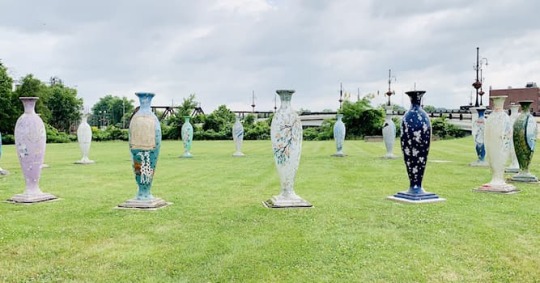
Where in the USA was Vasehenge, a collection of large vases arranged to mimic England's Stonehenge?
Vasehenge was a collection of large vases arranged in a similar fashion to the iconic Stonehenge installed in Zanesville, Ohio. The vases were made of different materials, including stone, clay, and metal, and they varied in size and shape.
The idea behind Vasehenge was to pay homage to the ancient practice of using large stones for ceremonial purposes. However, instead of using stones, Vasehenge used vases. The collection was said to represent the diversity of life and the different cultures that have contributed to human history.
Some of the vases were decorated with intricate designs and patterns, while others were left plain to showcase their natural beauty. The arrangement of the vases was also significant, as they are positioned in a way that aligns with the movements of the sun and the moon.
One of the most interesting aspects of Vasehenge was the mystery surrounding its creation. No one knows who built it or why. Some speculate that it was created by a group of artists, while others believe that it has a deeper spiritual meaning. Regardless of its origins, Vasehenge was a unique and awe-inspiring sight.
Stonehenge is a prehistoric stone circle monument, cemetery, and archaeological site located on Salisbury Plain in England. Its creators and purpose are speculated but remain unknown.
1 note
·
View note
Photo

from IG stonehenge
Our spellbinding homage to Her Majesty The Queen! 👑
We've projected eight portraits of Queen Elizabeth II onto Stonehenge in celebration of the Platinum Jubilee. Each picture is from a different decade of The Queen’s reign, illuminating the ancient monument’s iconic façade in a spectacular display.
.
#jubilee #platinumjubilee #queen #queenelizabeth #light #projection #stonehenge #salisbury #wiltshire #visitsalisbury #visitwiltshire #visitbritain #lovebritain #lovegreatbritain #uk #england #englishheritage #travelphotography #visitengland #history #heritage #stone #archaeology #charity

from IG historyofthemonarchies
Images of the Queen from each decade of her reign have been projected on to Stonehenge in Wiltshire, to mark the Platinum Jubilee.
👑🇬🇧
#queen #queenelizabeth #platinumjubilee #jubilee #stonehenge #englishheritage #royalfamily #royal #england #buckinghampalace #british #monarchy #crown #britishroyal #queen #queenelizabeth #princephilip #princecharles #princewilliam #dukeandduchessofcambridge #monarchie #commonwealth #princessanne #duchessofcornwall #countessofwessex #platinumjubilee #historyofthemonarchies
0 notes
Text
Merlyn: the Wildman of the Woods
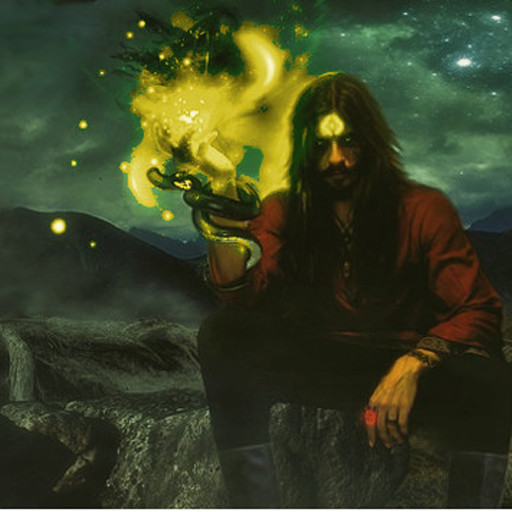
Master Merlyn, the all powerful Wizard of history whose magick is highly coveted, is actually Myrddhin & is a Welsh God. He is the Lord of Nature, Poetry, Smithcraft, Healing, Knowledge, & Magick. He historically was a Pheryllt Druid & part of the original Dragon Priesthood (a fact few know about because of biased opinions no one asked for). He is MUCH older than the legends make him out to be! Since he is the Lord of Nature he is the God of Druidry (Art of the Oak Knower), and laid down the laws that govern how magick works. The British, Gaulish, & Gaelic Druids gathered at Stonehenge every turn of the season & paid homage to "a God of poetry, magick, & knowledge," and did the same thing upon the discovery of Mistletoe upon an Oak (a very sacred occurrence that was revered with ceremony & a golden sickle). This God was discovered to actually be Myrddhin. He is the Wildman of the Woods who rules over Madness, Revelry, & Liberation, a Title given to him after earning it upon his retreat into the woods after war to reconnect with the Old Gods & rediscover his magick. He is Nature, & we work with Nature as well as enjoy natural pleasures. We are of Merlyn & therefore are Merlyneans. His Staff is the Torch of Knowledge which he uses to light the way through the Shadow into the Light. His Mark is the Faeryblood given to His people being born of Faerie & therefore Changelings. Master Merlyn is the Gnaddr (pronounced NAH-thare) known in our Tradition as the original Dragon-Derwyd. It was He who had the prophecy of the Reg & White Dragons of Pendragon, which represents His connection to the Pheryllt Priesthood. This Draconic association of the Druids was lost long ago, but has always been remembered by the Welsh Bards who have always called Druids "Adders." (This would make that legend of St Patrick much more gruesome) What the Devil/Man In Black is to Traditional Witches, Master Merlyn is to Merlyneans.
If you reverse engineer the name of Merlyn's home, Carmarthen, from it's original name of Caer Myrddhin in Welsh, you eventually get Moridunum. It means "Sea-Fortress" and refers to an ancient name for Great Britain called Albion. This points to the Arthurian side of Master Merlyn. Do the same exact reverse engineering using the rules of the Welsh language with the name Myrddhin & you come up with Moridunos, meaning "He of the Sea-Fortress." This comes up with his Title as the Fortress of Albion. This bit of info comes from John Michael Greer's "The Mysteries of Merlin."
Master Merlyn's Wizardry is probably the most coveted in history due to how powerful he is. I am truly honored to be taught by Master Merlyn, and therefore his child: a Merlynean Wizard. I am a sworn Guardian of the Grimoire of Merlin, and some of the most sought after spells & incantations in history. For this reason the magickal community is after me & often tries to burn me at the stake (VERY hypocritical BTW! But if the world is after me then I take it as a compliment!). Merlyn isn't just an idea or a legend that unites us all, He is our deity & our father, the Father of Faeryblood. He is a Pheryllt Druid & the most powerful Wizard who ever lived.
#druidblr#magick#wizardry#paganism#merlynean wizardry#an wyn emrys#merlinean wizard#merlinean secrets revealed#merlinean wizardry#hail merlyn#the serpent set me free#the serpent set us free#pheryllt druidism#pheryllt druid#pheryllt#book of pheryllt
4 notes
·
View notes
Photo

An homage to Stonehenge is the ‘Summer Solstice’ Ring by Theo Fennell
29 notes
·
View notes